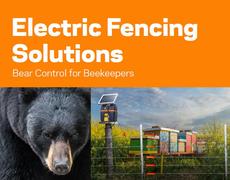Electric fencing is a physical barrier that uses high pulse electric shocks to deter animals or people from crossing a boundary. The high pulse voltage is uncomfortable but nonlethal, normally for safety consideration, the pulse period of the shocks is less than 1Hz, for a good operation, the amplitude of the shock is thousands of volts.
Nowadays electric fencing is used for pet control, agricultural and security purposes.
For pet purpose, electric fencing is portable, help host to keep pet under control, the voltage is low and less powerful needed, it is uncomfortable when pet touched, so pet will not escape from the fencing barrier.
For agricultural purpose, electric fencing is more simple and cost efficient than tradition physical barrier, the electric fencing voltage required for different animal is variable, people normally use the voltage under 500 ohms for operation evaluation, usually bigger animal needs higher voltage, thicker fur needs higher voltage, for example, cattle need bigger voltage than dog.
For security purpose, different from pet and animal purpose, when electric fencing is cut off or contacted earth, security fence will give warning signal, security fence also hang up high voltage warning board on the fence to warn the intruder. But the security fence is nonlethal; the fence will give intruder painful, deterring the intruder.
Fence energizer
Electric fence energizer is designed to converts power into a brief high voltage pulse. One terminal of the fence energizer releases an electrical pulse along a connected bare wire. Another terminal is connected to a metal rod implanted in the earth, called a ground or earth rod. A person or animal touching both the wire and the earth during a pulse will complete an electrical circuit and will conduct the pulse, causing an uncomfortable electric shock. The effects of the shock depend upon the voltage, the energy of the pulse, the degree of contact between the recipient and the fence and ground and the route of the current through the body; it can range from barely noticeable to uncomfortable, painful.
Fence chargers use a charged capacitor, the charge is then released using a thyristor or similar solid-state component. Voltage is consistent due to electronic output controls, within the limits of output power. Pulse width is much narrower. Depending on the area to be fenced and remoteness of its location, fence energizers may be hooked into a permanent electrical circuit, may be run by lead-acid or dry cell batteries, or a smaller battery kept charged by a solar panel.
Fencing materials
The electrified fence itself must be kept insulated from the earth and from any materials that will conduct electricity and ignite or short out the fence. Fencing must therefore avoid vegetation, and cannot be attached directly to wood or metal posts. Typically, wooden or metal posts are driven into the ground and plastic or porcelain insulators are attached to them, or plastic posts are used. The conducting material is then attached to the posts.





